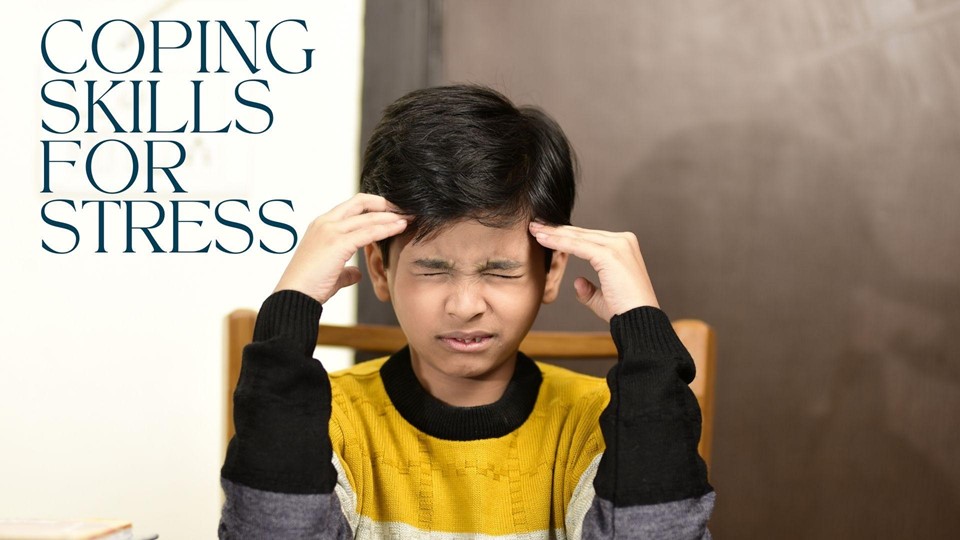Coping with Stress
 Stress
and Health
Stress
and Health
Watch a video presentation or download Powerpoint slides on the information that follows below.
Comprehensive health education and physical education must address stress. The stress response in the human body is important and beneficial - it helps humans quickly react and address potentially threatening situations. Research has shown that moderate, short-lived stress can improve alertness and performance and boost memory. Today, however, life for the average person is full of so many forms of stimulation that cause stress on a regular basis. This constant activation can adversely affect health.
Through human history, the long-lasting “body and mind memories” of stressful situations helped people learn from the experience. However, this comes at a cost. We now know that the experience of severe trauma and stressful events in childhood and adolescence can affect young people emotionally and physically for decades. Educating and equipping students with ways to cope and manage stress daily will serve as a foundation for living longer healthier lives.
Stress and the Body
The physiological changes the human body goes through to cope with the elevated levels of stress can themselves cause damage to the body. For children and teens, chronic stress, even chronic low level stress, is “much like a motor that is idling too high for too long,” warns Harvard Health, and the constant surges of epinephrine can lead to damaged arteries, blood vessels and raise the risk of heart attacks and strokes later in life. Excess weight gain and buildup of fat tissues can also happen when the body repeatedly stores unused nutrients as fat as it tries to safeguard or replenish energy stores that stress depletes. Furthermore, the American Psychological Association asserts that “children who experience early life toxic stress are at risk of long-term adverse health effects that may not manifest until adulthood. These adverse health effects include maladaptive coping skills, poor stress management, unhealthy lifestyles, mental illness and physical disease”.

Stress Management Instruction
Two key body systems are involved in how a person manages stress: the sympathetic and parasympathetic nervous systems. The sympathetic nervous system activates the body’s “fight or flight” response. During this process, heart rate increases, eyesight improves, and digestion is slowed. The parasympathetic nervous system, on the other hand, manages the life-sustaining processes to help a person feel safe and relaxed, such as supporting digestion. When managing stress, the goal is to calm the sympathetic nervous system and activate the parasympathetic nervous system.
Key strategies to do so include:
Introducing children to meditation, gratitude, mindfulness, breathwork, and yoga.
Support children to manage stress in their childhood and throughout their lives by introducing them to the practices of meditation, gratitude, mindfulness, breathwork and yoga. These practices connect the body and the breath:
- When young children feel overwhelmed, teach them to take three deep breaths to calm their nervous system.
- As children get older, increase the time they spend breathing deeply, as well as the time they sit quietly with their thoughts.
- Later, educate them directly on how the coping skills counter the body’s stress levels.
Encouraging social connection.
Supporting children to better manage stress is to ensure that their social networks are strong and positive. Strong social connections and experiences raise oxytocin, balancing stress hormones and increasing positive feelings.
- Provide lessons on friendship and healthy relationships.
- Educate youth about helpful resources and encourage help-seeking.
- Utilize the K-10 social emotional instructional resources available on the Health Smart VA website.
Foster positivity and gratitude.
Giving children a positive outlook after experiencing stressful situations allows them to understand that things can get better after difficult times.
- Speak with children about what they experienced and begin practicing gratitude with them, acknowledging their experience and feelings while also encouraging them to begin to think about all that they do have to be grateful for in that moment. Teaching kids to look on the bright side is a lifelong skill that will carry them through the inevitable ups and downs of everyday life and adulthood.

Resources
- Harvard Health: Understanding the Stress Response
- American Psychological Association: Stress Effects on the Body
- Toxic Stress: Effects, Prevention and Treatment
- Cleveland Clinic: Sympathetic and Parasympathetic Nervous Systems
- Deep Breathing Exercises for Children
- Yoga Poses for Children
- Health Smart VA - Elementary School Social Emotional Skills Playlist
- Cultivating Gratitude for Children
- Harness the Bright Side of Stress
- Stress, Trauma and the Brain - Insights for Educators

